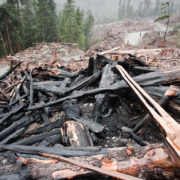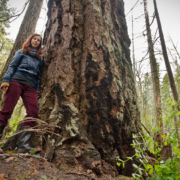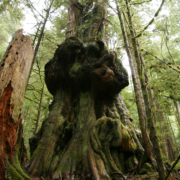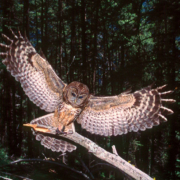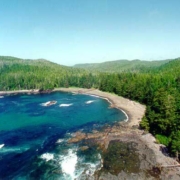Expected layoffs in B.C. government’s Ministry of Forests bad timing says NDP
On the heels of issuing layoff notices to 294 public service workers Monday, the B.C. government is planning for another round of cuts in the Ministry of Forests by early summer.
At a time when lumber prices are booming but the industry is far from recovering, it’s either the worst time to slash jobs — according to the leader of the Opposition — or an opportune time to cut, according to an industry leader.
Of the 294 notices issued yesterday, 204 are in the Forests Ministry and 38 in the Integrated Land Management Bureau. The remaining 52 positions are in the Ministry of Energy, Mines and Petroleum Resources.
The government intends to cut “no more than five per cent” of the 30,000-member civil service — a maximum of about 1,500 full-time equivalent positions — over the next three years.
In a letter to employees Monday, deputy minister Dana Hayden said the sooner the upcoming cuts are identified, the better. “Consequently, the workforce adjustment process for 2011/12 will likely occur before this summer.”
After more than three years in a down market cycle for the forest industry, lumber prices are up substantially — mainly because supply was taken off the market — but the industry is not expected to ramp up overnight, said John Allan, president of the Council of Forest Industries.
B.C. lumber production is down by 37.4 per cent in the last two years.
Allan said the ministry can absorb the cuts and continue to carry out its duties, including enforcement. “I’m frankly not concerned.”
But NDP Opposition leader Carole James slammed the government in question period yesterday, saying it doesn’t make sense to cut forestry workers when the government is trying to open new markets for lumber and diversify the industry. “I think it’s short-sighted and not looking long-term at growth,” said James in an interview.
Government should have run a deficit for at least another year, depending on the economic recovery, so it wouldn’t have had to make such deep cuts and lose so many experienced staff, she said.
The cuts, which include 22 compliance and enforcement staff, will have an impact on the forests ministry’s ability to monitor whether companies are following the law and protecting the environment, she said.
Ken Wu, of the Ancient Forest Alliance, agrees, saying enforcement in B.C.’s forests is already “way down” from the level in the early 1990s. “They never had enough people to begin with,” said Wu.
Rick Jeffery, chief executive officer of Coast Forest Productions Association, said the cutbacks won’t have any impact on the quality of B.C. forest management, however.
The annual allowable cut hasn’t been harvested in the last three years and that trend will likely continue, he noted. “One can ask whether we need as many bodies looking after ministry business if the amount of business they have has significantly dropped.”
Darryl Walker, president of the B.C. Government and Service Employees’ Union, said the cuts have already gone too far, and the government appears to have no plan.
“In this day when forestry is in jeopardy — the great industry and engine that drove the building of this province and we seem to be giving up on it — I just don’t understand it,” Walker said.
The Forests Ministry budget drops to $595 million in 2011/12, from $641 million this year.
More people should be working in areas such as research in the ministry, not fewer, Walker said.
“It will turn around and we will want to rebuild the forest industry and yet we’re not doing anything to prepare young people for it.”

